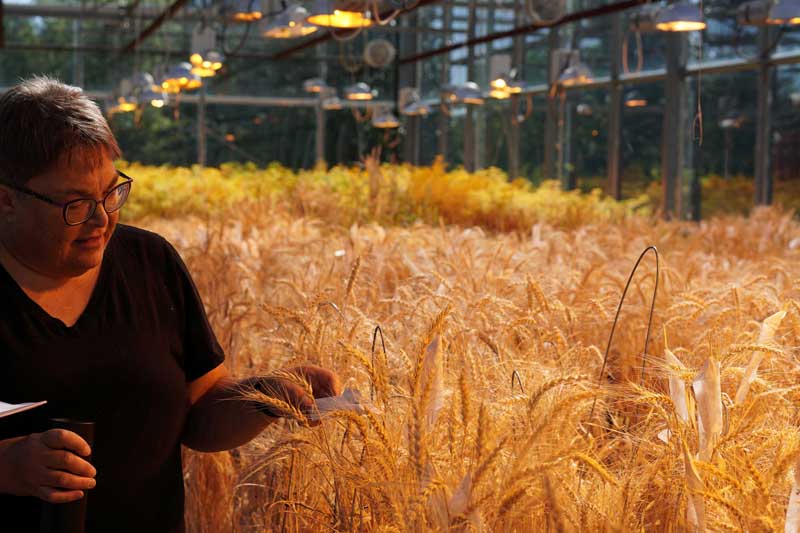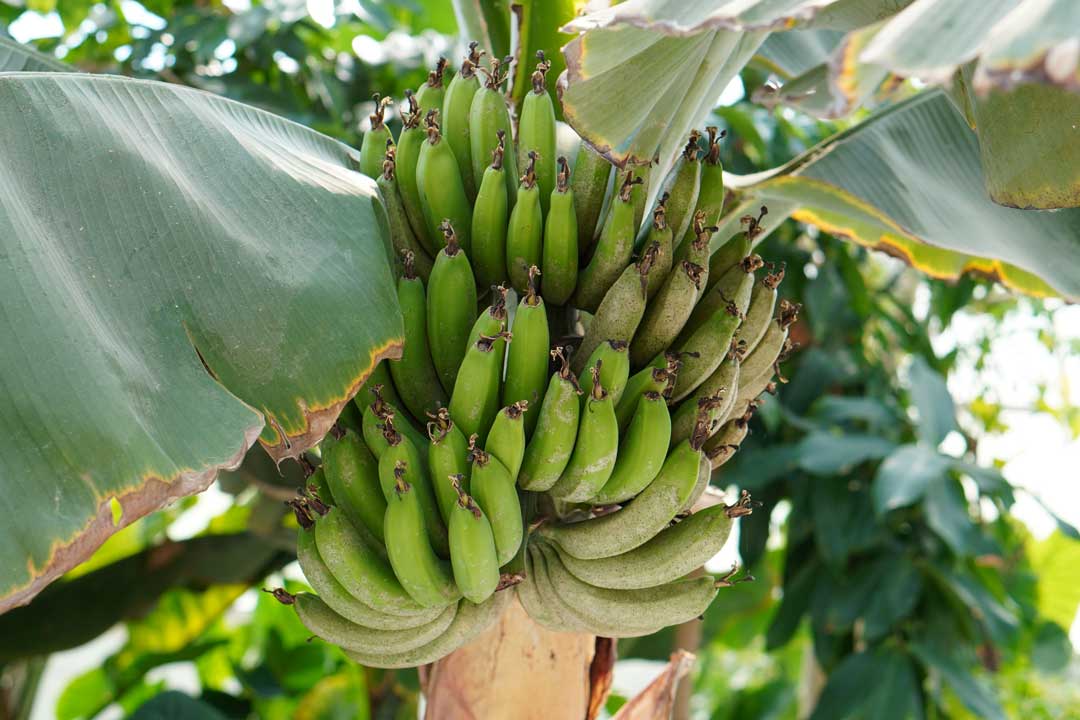
Take 5: Five things to know about the Agriculture Greenhouses
USask graduate Jackie Bantle (BEd’88, BSA’92) manages a state-of-the-art facility with 1,500 square feet of growing space.
By SHANNON BOKLASCHUKDid you know that tropical fruit like bananas and papayas can be successfully grown on the Canadian prairies?
That may sound unlikely, but it’s actually a regular occurrence at the University of Saskatchewan (USask) Agriculture Greenhouses. The buildings, located north of the Canadian Light Source (CLS) synchrotron on Innovation Boulevard on USask’s Saskatoon campus, comprise a state-of-the-art facility consisting of 13 glass greenhouses and one poly greenhouse with a total growing area of 1,500 square feet.
The facility was originally constructed in 1992, and an addition was built in 2001 to provide more much-needed space. For more than a decade, the facility has been overseen by USask alumna and greenhouse manager Jackie Bantle (BEd’88, BSA’92), who works alongside greenhouse technicians Eldon Siemens (BA’94, BEd’96, BSc’03), Katie Sommerfeld, and Denis O’Connor (and a small dog named Clover). The team monitors the facility seven days a week.
Here are five facts to know about the Agriculture Greenhouses.
1. A variety of edible plants—some bearing fruit, vegetables, and legumes—are grown in the greenhouses. This includes tamarind, banana, papaya, lemon, and curry trees, as well as chickpea plants, mint, hazelnut plants, hot peppers, sugarcane, and more.
There are also many species of tropical plants growing year-round, including popular houseplants such as Monstera, Staghorn Fern, and various cacti and succulents.
“My favourite part of working here is probably being among the plants,” said Bantle. “I love being around plants and seeing them grow, especially in the winter. But I also love the people. There’s always a lot of really interesting people and a lot of new things being researched, so it’s cool to see what’s coming on the horizon.”
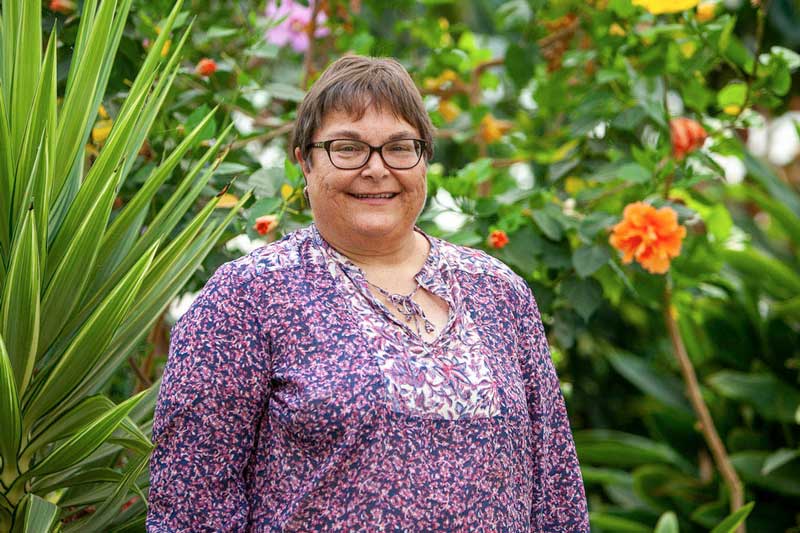
2. A lot of technology is used at the facility, as each greenhouse can be programmed to meet specific temperature, humidity, and lighting requirements.
Adjustments to day length as well as ebb and flow irrigation are options in some of the greenhouses, and seven cold chambers are also available with programmable temperature and humidity controls for short- or long-term storage. A “flood floor” in one area of the poly greenhouse can be used to water plants from the ground up by reusing recycled water that is regularly cleaned to remove algae.
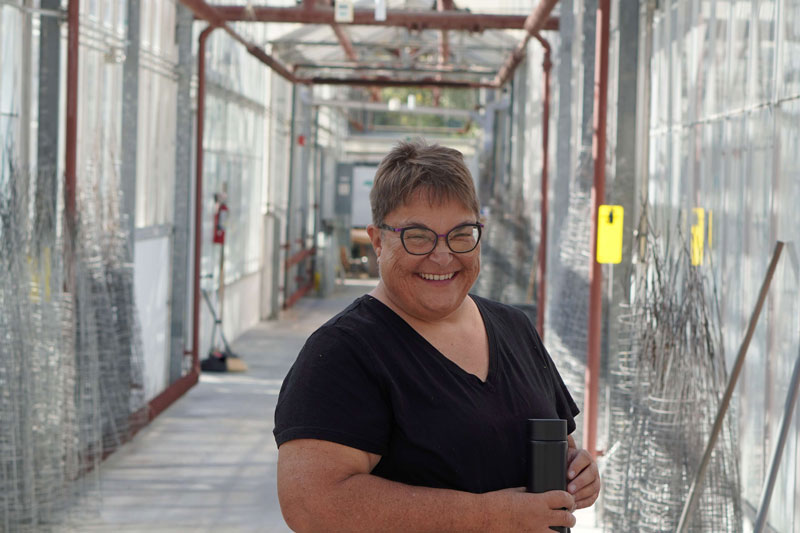
3. The staff at the Agriculture Greenhouses release beneficial insect species into the buildings to help control populations of other insects that may damage or kill plants. For example, small mites can eat other tiny bugs called thrips, which can cause damage to fruit, flowers, and leaves.
Specific plants are also strategically placed throughout the facility to support the wellbeing of the beneficial bugs. For example, mullein plants are often introduced because the plants are known for providing a good home for Dicyphus hesperus, helpful insects that were developed as a biocontrol agent in North America.
“An interesting fact that you might not know about the Ag Greenhouse is we actually bring in insects to eat some of our ‘bad’ insects,” Bantle said. “We used to use a lot of chemicals, but there’s a lot of resistance on chemicals to try to control bugs. So now we actually bring in insects—‘good’ bugs—to eat our bad bugs.”
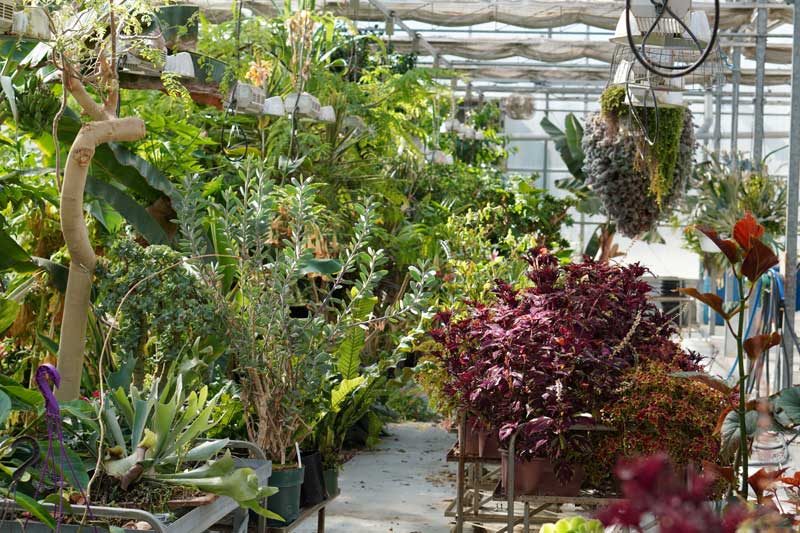
4. The greenhouses provide hands-on teaching spaces for undergraduate and graduate classes at USask.
Several courses offered by the Department of Plant Sciences in the College of Agriculture and Bioresources utilize the greenhouses to demonstrate the principles of greenhouse production of horticultural crops. The facility is also used to propagate and maintain plant materials that are required for various undergraduate and graduate classes.
Many of the plants found in the greenhouse are included in educational events held on and off campus, such as Gardenscape, and groups such as USask’s Horticulture Club utilize the space to house plant materials. Also, throughout the school year, local elementary schools are welcomed for tours at the greenhouses; the visiting children are given plant cuttings to get them excited about agriculture and to encourage them to consider studying plant science at the university, Bantle said.
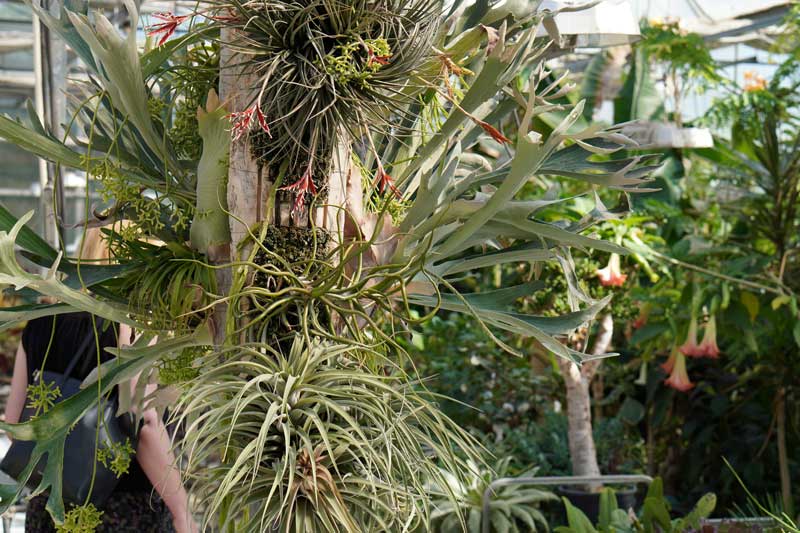
5. The greenhouses form a hub of innovation where research is continually taking place.
The largest single use of the greenhouse facility is the propagation of plant-breeding material during the winter season. Some of the research that has occurred at the facility includes examining plant stress responses, disease control, fertility, and water management in crop and non-crop species. From haskaps to drought-resistant wheat, Bantle has played a part in a number of Canadian research innovations led by USask.
“What I want people to know about the greenhouse is we are a research greenhouse, above all, and we have a lot going on here,” she said. “A lot of the crops that farmers are growing in the province actually originate here. If it’s a crop that originated from the university, at some point it probably started in this greenhouse. It’s a big conglomeration of a lot of faculty, grad students, research technicians, and my staff who help people get food to the table here in the province.”
